California Reds
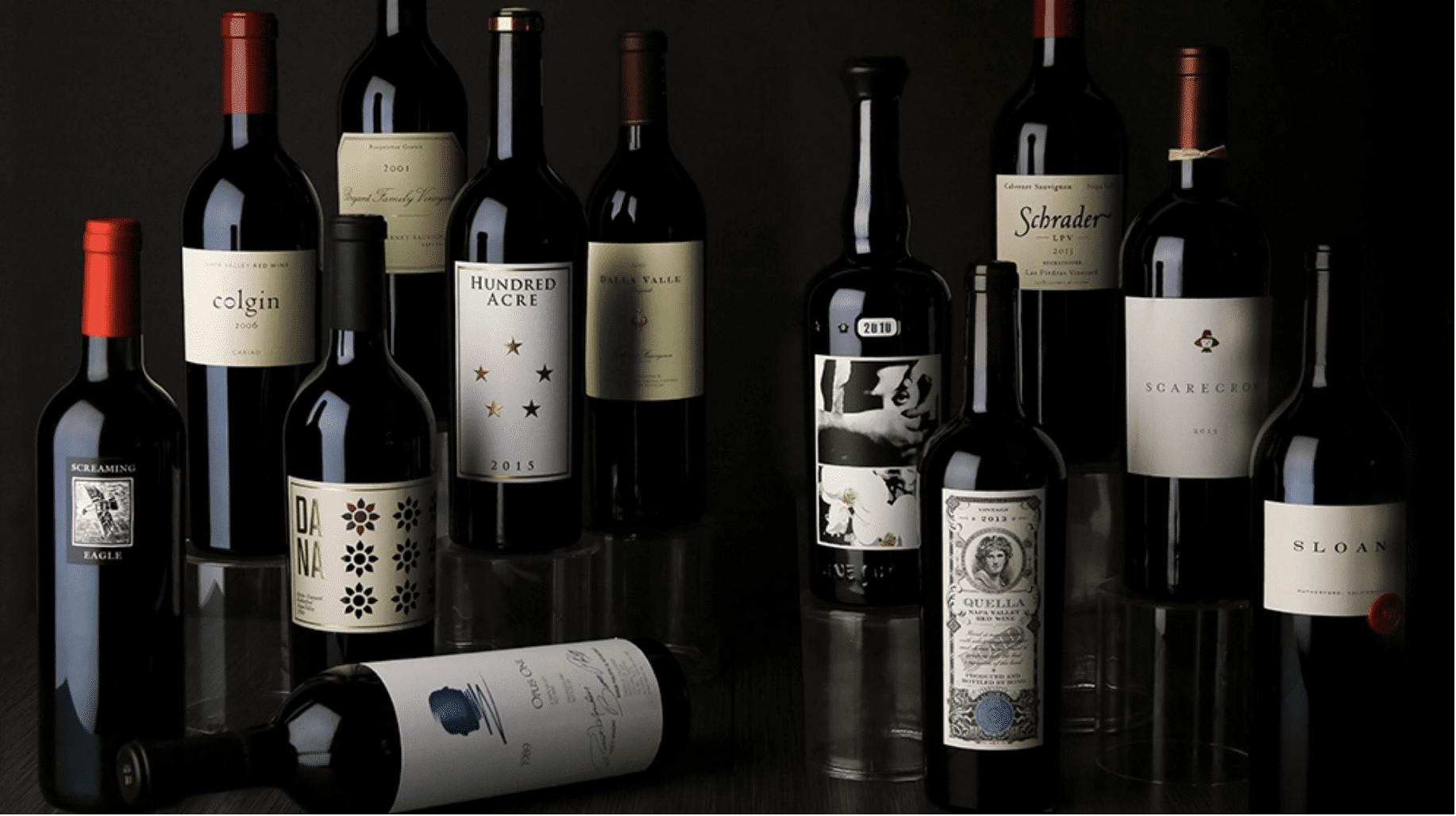
California Reds – A small group of winemakers in Northern California were committed to bringing the creating a winemaking industry in California that could compete on an international scale. But even once high quality wines began to be produced, wine makers had difficulty in marketing.
The turning point for California wine occurred on May 24, 1976, when California producers entered their wines in a blind tasting, comparing California wines with French. The judging panel was exclusively French, so it was a shock when the California wines were ranked the highest in both of the competition categories: Chardonnays and reds category. The results of what became known as the Judgment of Paris were reported in Time Magazine.
Since then, demand for California reds and whites surged. Today the state is recognized for creating some of the best wines in the world, and those competition wines are still being produced today.
California Wine Vintage Chart
Popping open a bottle of wine shouldn’t be a shot in the dark. That’s why Wine Enthusiast is here with our official 2021 vintage chart, to help you decide which bottles to save for later and which to enjoy right now.


The California Wine Market
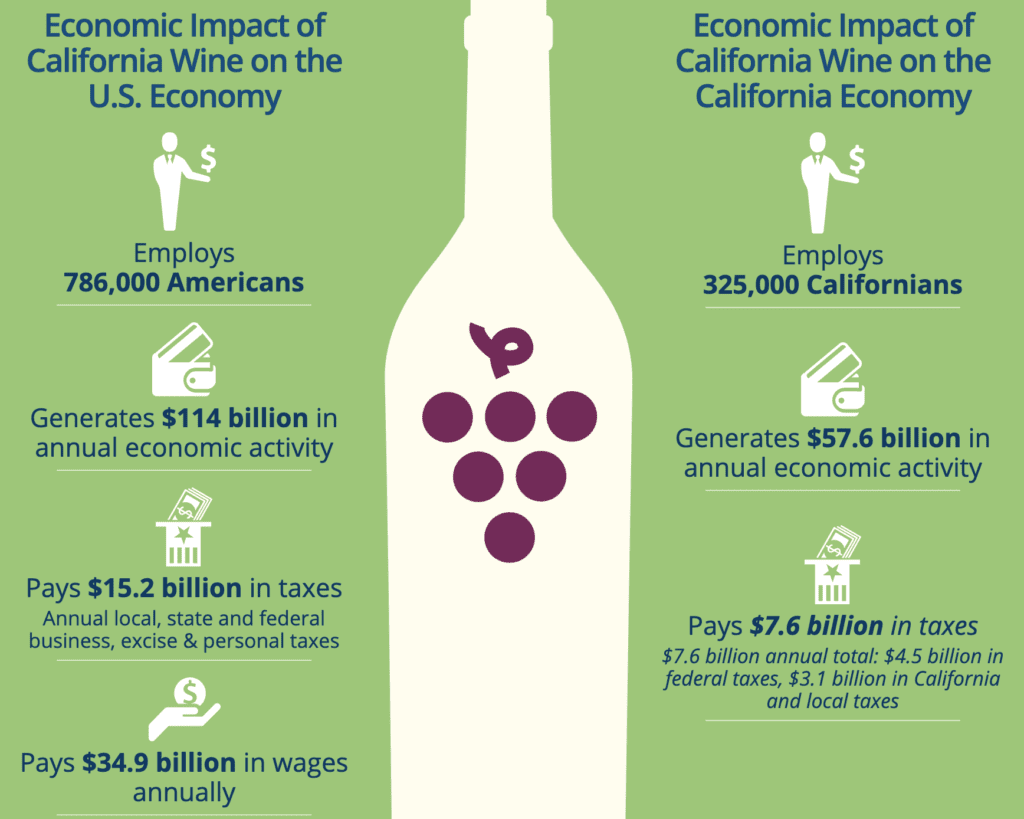
California is the nation’s number one wine state and the source of 81 percent of U.S. wine production. California wine makes a significant contribution to the nation and all fifty states by providing quality jobs, bolstering economies through tourism and taxes and enhancing communities through environmental stewardship and charitable giving. Source: http://wine-economy.com/
Wine shipments to the U.S. from all production sources—California, other states and foreign producers—grew 1% to 406.5 million cases in 2018, with an estimated retail value of $68.1 billion. The U.S. has remained the world’s largest wine market by volume since 2010 and the U.S. is now the third leading global wine producer. California’s 245 million cases shipped within the U.S. in 2018 represent a 61% share of the total U.S. wine market.
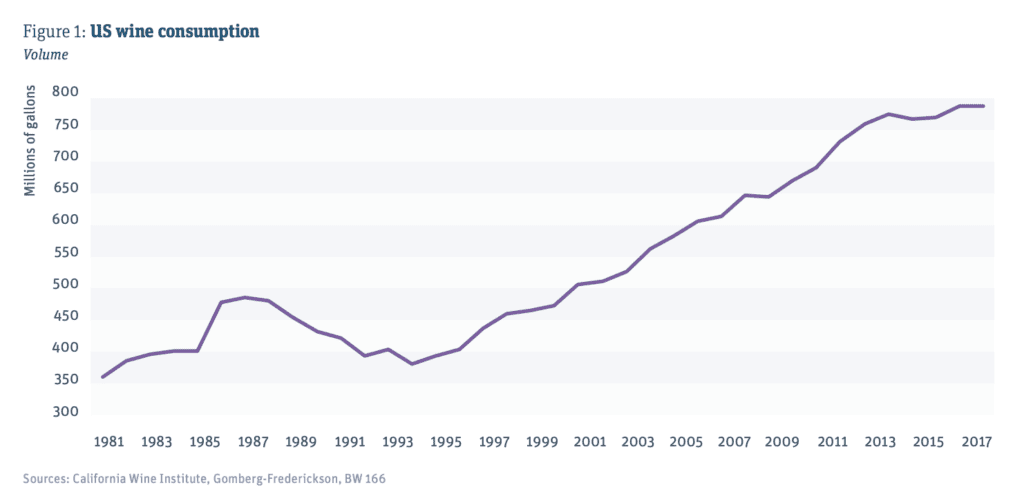
Twenty-five years later, the US is the largest wine-consuming country in the world, giving US producers an amazing home-court advantage. That said, while the total dollar sales of wine in the US is still growing, the rate of growth is flattening. This is at a time when the US is in its second longest economic expansion in history, and business analysts see the US economy operating at such an optimal state that it has reached the rare “Goldilocks” moment. Just like the early 1990s when the boomers made their retail presence obvious, driving record wine sales, the huge millennial generation, all over 21 years of age now, is moving into their careers and higher-spending years. They will surpass the baby boomers as the nation’s largest demographic by pure numbers in 2019.
U.S. Wine Exports
U.S. wine exports, 95% from California, reached $1.46 billion in winery revenues in 2018. Volume shipments were 375 million liters or 41.7 million cases. The European Union’s 28-member countries were the top market for U.S. wine exports, accounting for $469 million; followed by Canada, $449 million; Hong Kong, $130 million; Japan, $93 million; China, $59 million; Mexico, $27 million; South Korea, $25 million; Nigeria, $15 million; Dominican Republic, $14.4 million, and Singapore, $14 million.

Profile of a US Wine Drinker
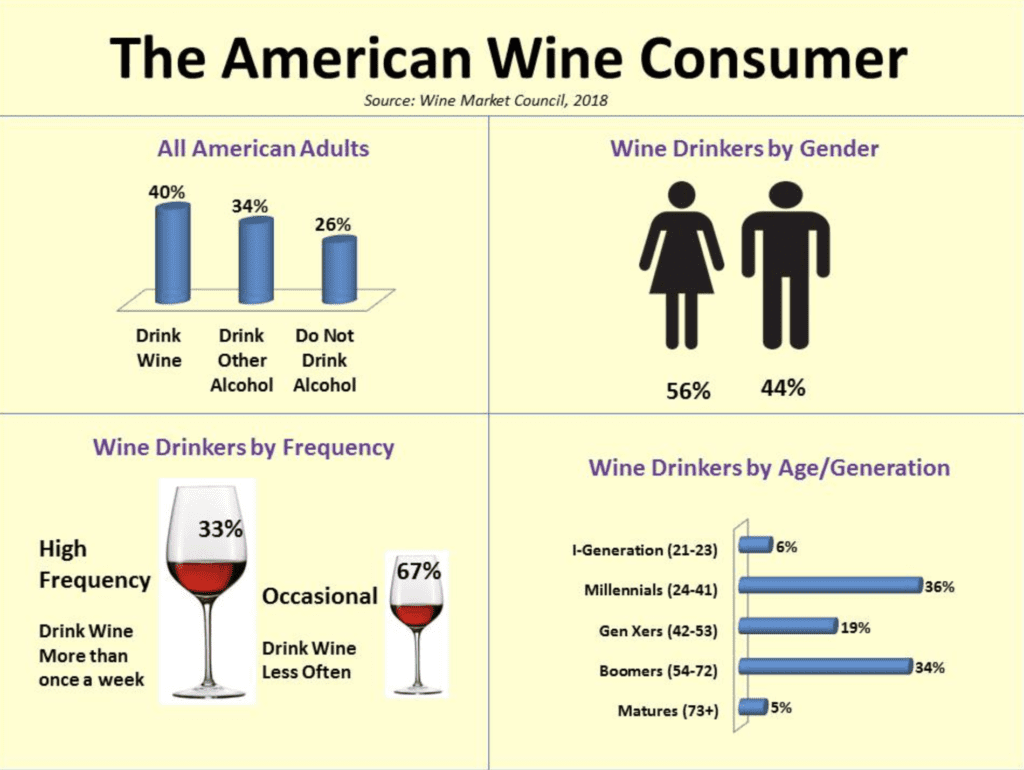
Percentage of Adult Americans who drink wine = 40% of legal drinking population (240 million) (WMC and bm166).
Wine Consumption Frequency: (WMC- 2018)
High Frequency Wine Drinkers = 33% drink wine more than once a week
Occasional Wine Drinkers = 67% drink wine once a week or less
Gender of Wine Drinkers = 56% female and 44% male (WMC, 2018)
Age/Generation of Wine Consumers = Matures (ages 73+, 5%), Baby Boomers (ages 54 – 72; 34%), Gen X (ages 42-53; 19%), Millennials (36%, ages 24 – 41), I-Generation (ages 21 – 23; 6%) (WMC – 2018)
Per Capita Wine Consumption = 11 liters per person (2.94 gallons). Even though US is largest wine consuming nation by volume, per capita rates are less than many other countries (Wine Institute, 2016)

The Wine Industry’s Impact on California
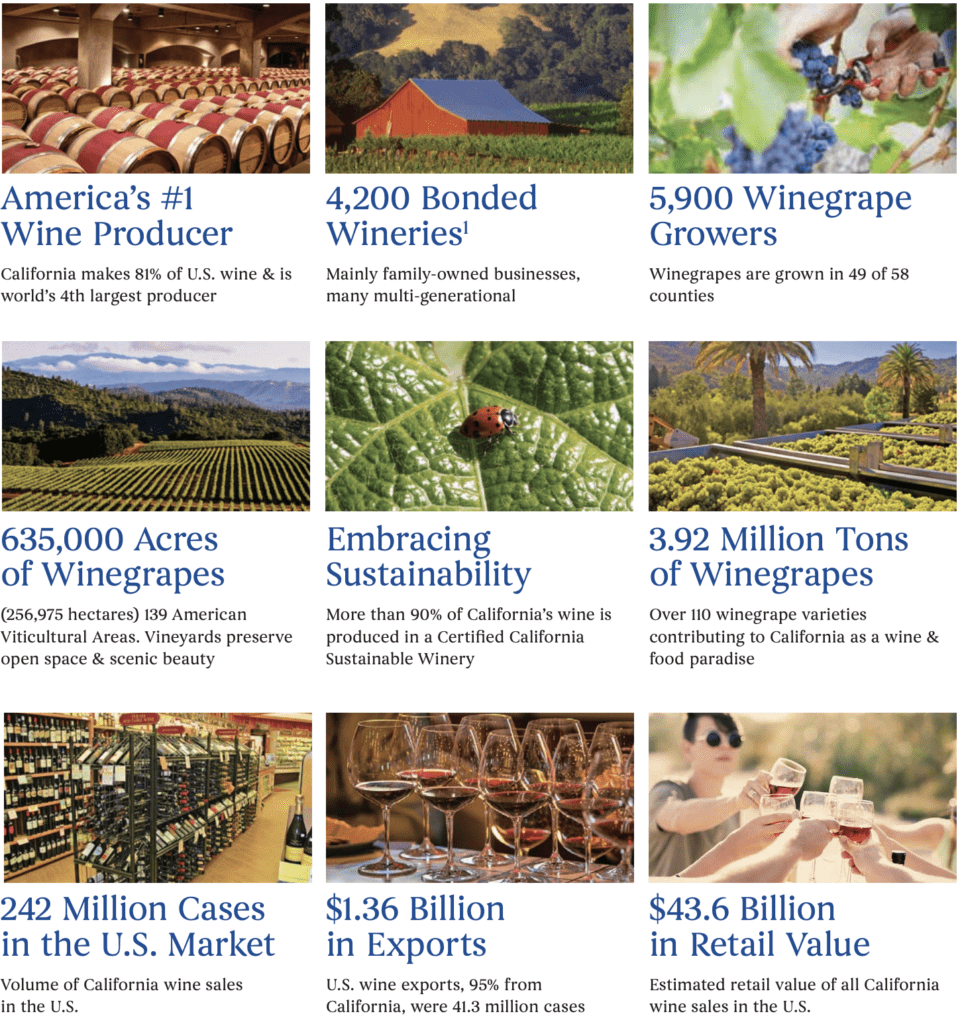
California Wine Sales
California Wine Sales in U.S. Market Hit $40 Billion in 2018, up 3% from the previous year. California wine sales to all markets, including shipments to the U.S. and export markets, were 285 million cases in 2018.
According to Nielsen-measured U.S. off-premise sales, top-selling varietals by volume share are:
Chardonnay, 18.6%
Cabernet Sauvignon, 14.6%
Red Blends, 10.6%
Pinot Grigio/Gris, 9.7%
Merlot, 6.4%
Moscato/Muscat, 6.2%
Pinot Noir, 5.2%
Sauvignon Blanc, 5.1%
White Zinfandel/Blush, 3.6%
Rosé, 2.7%. Rosé
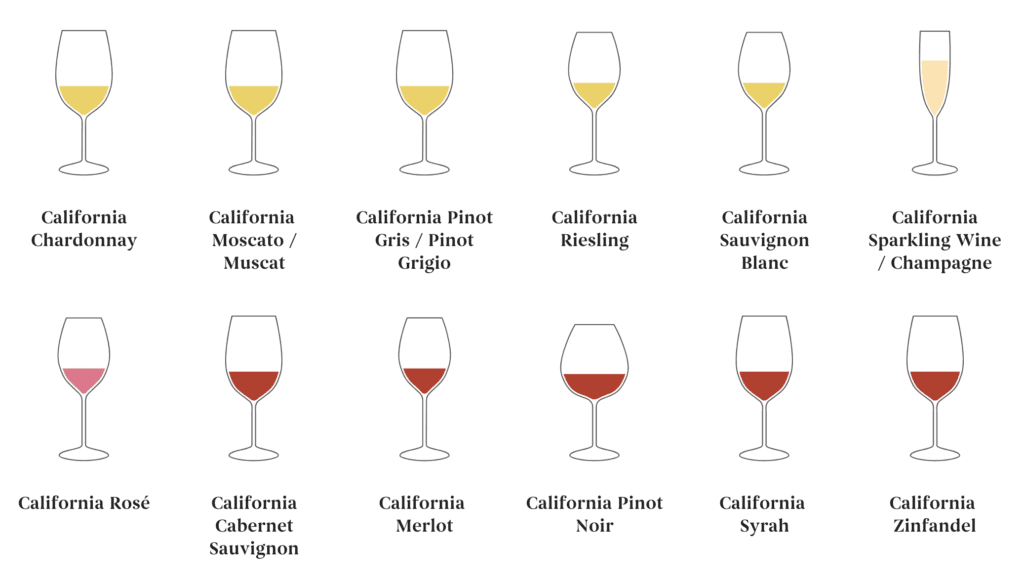
Northern California Wine Country
Learn the current wine regions of the California North Coast including appellations and popular wine grapes.
Wine Country is the region of California, in the northern San Francisco Bay Area, known worldwide as a premier wine-growing region.
The region is famed for its wineries, its cuisine,[2] Michelin star restaurants, boutique hotels, luxury resorts, historic architecture, and culture.
Viticulture and wine-making have been practiced in the region since the Spanish missionaries from Mission San Francisco Solano established the first vineyards in 1812.
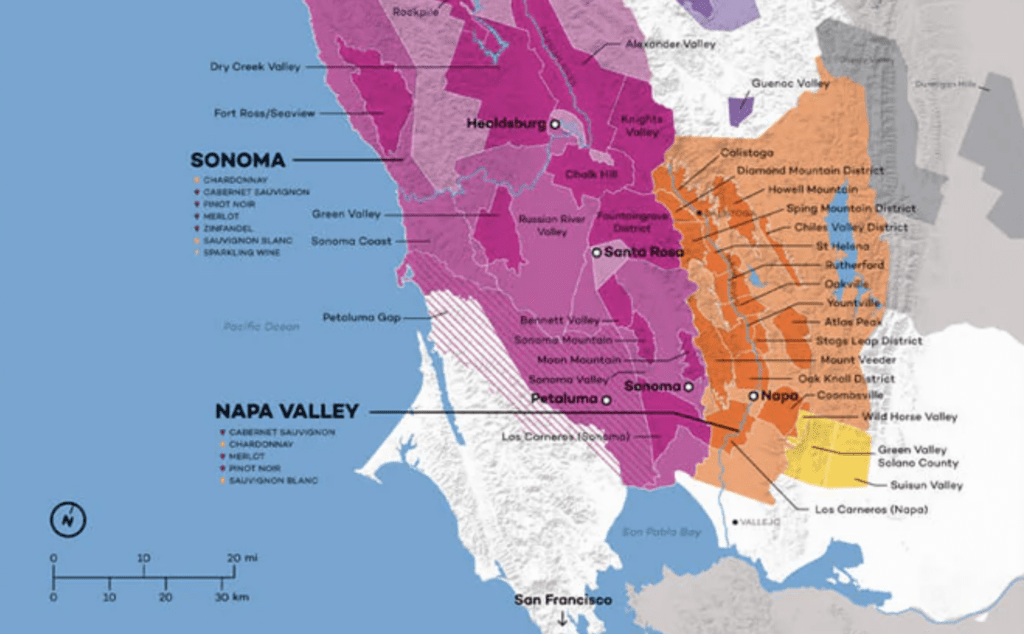
Northern California Wine Country – Napa
In Napa County: Atlas Peak, Los Carneros, Mount Veeder, Napa Valley, Oakville, Rutherford, Saint Helena, Calistoga, Stags Leap District, and Yountville.
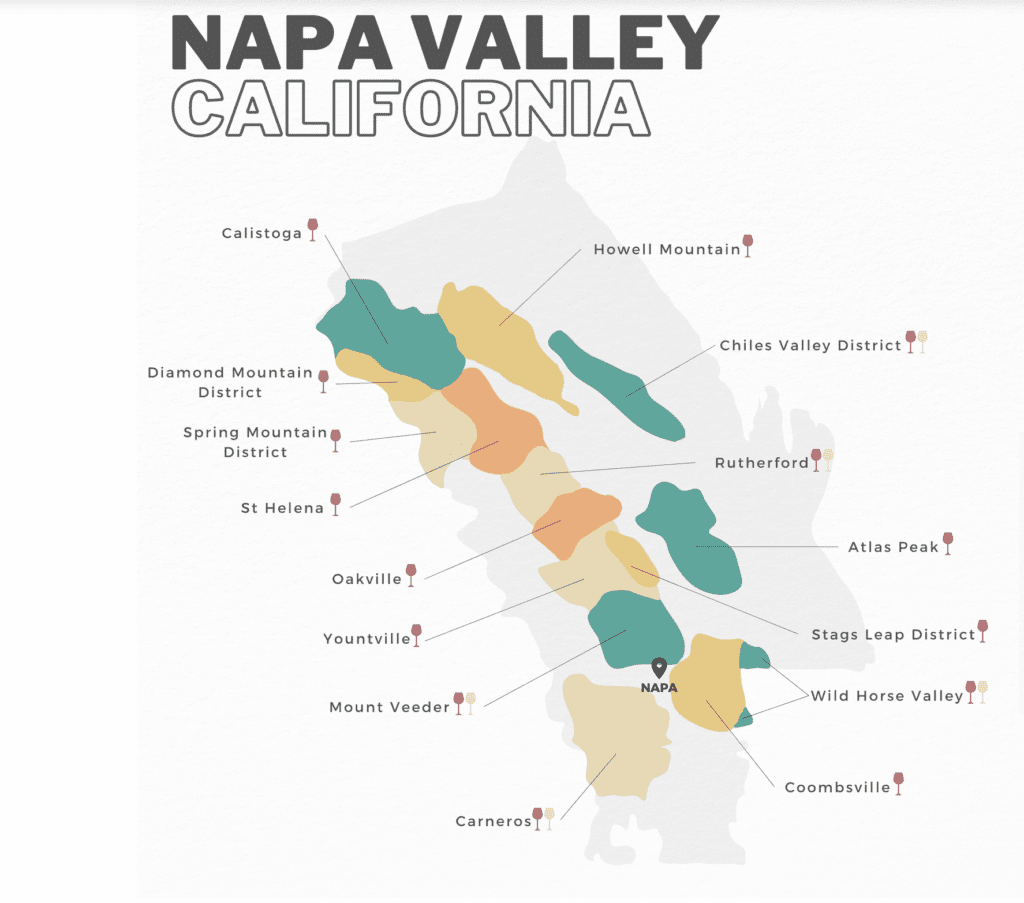
Winemaking in Napa Valley has been going on since the 19th Century, but it has only been since the 1960s that wine of any particular quality has been produced.
The founders of the wine industry in Napa Valley were George C. Yount, John Patchett, and his winemaker Charles Krug who established their company (Krug Winery).
The Beringer brothers have a long and important history in California.
Their winery was established way back in 1875, making it one of the oldest operating vineyards, and has been added to the U.S. National Register of Historic Places too.
Robert Mondavi, a pioneer in Napa Valley’s wine industry, established his winery in 1966. He championed varietal labeling and is considered to be one of the modern wine industry’s pioneers.
Napa Valley occupies a small but unique area. It is only 50 kilometers long from north to south and 5 kilometers wide.
To the west, Mayacamas Mountains create a natural boundary between Napa and Sonoma, and to the east, the Vaca mountains separate Napa from the northern part of Central Valley.
Despite its small size, you will discover the diversity of soil types, and climates taking influences from different Geographical aspects, which results in many different styles of wines produced in Napa Valley.
Napa Valley has Mediterranean Climate, which is favoring grape growing in this area.
However, what plays a crucial role in high-quality grape production is the number of cooling influences vineyards of Napa get.
San Pablo Bay plays the biggest role in cooling down Napa Valley, especially the southern vineyards of Stags Leap District AVA, Oakville AVA, and Rutherford AVA. Moving to the north, the climate becomes warmer.
Northern vineyards in Napa Valley, like Calistoga AVA and Saint Helen AVA, have the warmest daytime temperature and produce full-bodied, concentrated Cabernet Sauvignon.
This spot should be the hottest in Napa because it’s the furthest from San Pablo Bay but cool air from the Chalk Hill gap in the Mayacamas Mountain brings a bit of relief to this area and cools down the territory.
This slowing down the ripening process creates wines with a deep, rich flavor.
This is achieved through acid balance and leaving the grapes on the vine for as long as possible to extract their full flavor.
The grape varieties grown in Napa have changed a lot over the last 150 years.
These days, you can find over 200 different types of grapes there. Cabernet Sauvignon has risen confidently to become Napa’s star performer and is the most widely planted grape in almost all of the valley’s subregions.
One notable exception to this rule is Los Carneros, whose cooler mesoclimate suits Chardonnay or Pinot Noir very well.
Some people claim that Merlot is coming back into the wine world since it was so popular.
Today, people usually use it as a blending component for Napa wines and Bordeaux blends.
Zinfandel is a significant part of the Napa wine portfolio, though it makes up only a small percentage of the total land devoted to vineyards here.
Zinfandel is much better suited to hillside sites on the slopes, where their warm and dry environment provides perfect conditions.
Grapes of Northern California Wine Country Napa
Cabernet Sauvignon
Cabernet Sauvignon is the acknowledged king of red grapes in Napa Valley, accounting for 40% of our total production and 55% of our crop value. This vine is grown throughout Napa Valley and achieves a variety of expression depending on its vineyard site. Its flavors display a wide variety of black fruits, including currant, cherry and plum, and often show notes of spice from oak aging.
Food pairing: When young they are best matched with robust red meat dishes such as game and braised lamb, while older Cabs are superb accompaniments to simply prepared roasts and steaks and aged cheeses.
Chardonnay
Chardonnay is the second most planted grape variety in Napa Valley, and grows with particular success in the calcium-rich soils and cool climate of the Los Carneros AVA, where it can ripen slowly. Barrel fermentation, lees stirring and malolactic fermentation are the main winery techniques used to create complex aromas and flavors in this wine. As a result, Napa Valley Chardonnay can range in style from fresh, crisp and lively to rich, round and buttery.
Food pairing: This wide range of styles can accompany a wide variety of dishes, from simply prepared seafood to most pork and poultry dishes.
Merlot
Merlot has been a fixture in the Napa Valley since the early 1970s. Its lovely aromas of ripe cherry and rich earthiness, a soft texture and a smooth finish have appealed to a new generation of red wine drinkers. Given the diversity of vineyard sites and winemaking practices in Napa Valley, Merlot has shown itself capable of producing both lighter and full-bodied, richly textured wines.
Food pairing: Pair Merlot with food much in the same way as you would Cabernet Sauvignon, although its lighter body and tannins make it a versatile partner to a wide range of dishes.
Pinot Noir
The earthy, ethereal aromas and silky texture of Pinot Noir have beguiled wine connoisseurs for centuries. Coastal California possesses several areas that produce great Pinot Noir, and Napa Valley’s Los Carneros was one of the first to recognize its potential. One of the hallmark qualities of Pinot Noir is its bright acidity, which makes it a versatile partner with food.
Food pairing: Pinot Noir is one of the few red wines that pairs well with seafood (think salmon, tuna and bouillabaisse), a wide variety of cheese and is absolutely perfect with game birds and grilled lamb chops.
Sauvignon Blanc
The intense flavor profile of Sauvignon Blanc grabs your attention. Herbaceous, grassy notes and vibrant acidity are hallmark qualities of this grape, and it is capable of showing a wide variety of fruit character. Most Sauvignon Blanc is fermented in neutral vessels, such as stainless steel and concrete eggs, to allow its distinctive varietal character to shine through.
Food pairing: Fresh and bright and perfect for warm weather, Sauvignon Blanc goes great with light summer fare and salads and is wonderful with shellfish and goat cheese.
Zinfandel
An exceedingly versatile grape variety, Zinfandel was the mainstay of 19th century winemaking in California. Old vines in Napa Valley are capable of producing rich, heady, jammy wines with notes of spice and black pepper. Zinfandel is also made in lighter, more food-friendly renditions and is often used as the base for fortified wines.
Food pairing: The bold, spicy character of Zinfandel makes it a perfect partner with barbeque.
Northern California Wine Country – Sonoma
In Sonoma County: Alexander Valley, Bennett Valley, Chalk Hill, Dry Creek Valley, Green Valley of Russian River Valley, Knight’s Valley, Los Carneros, Northern Sonoma, Rockpile, Russian River Valley, Sonoma Coast, Sonoma Mountain, and Sonoma Valley.
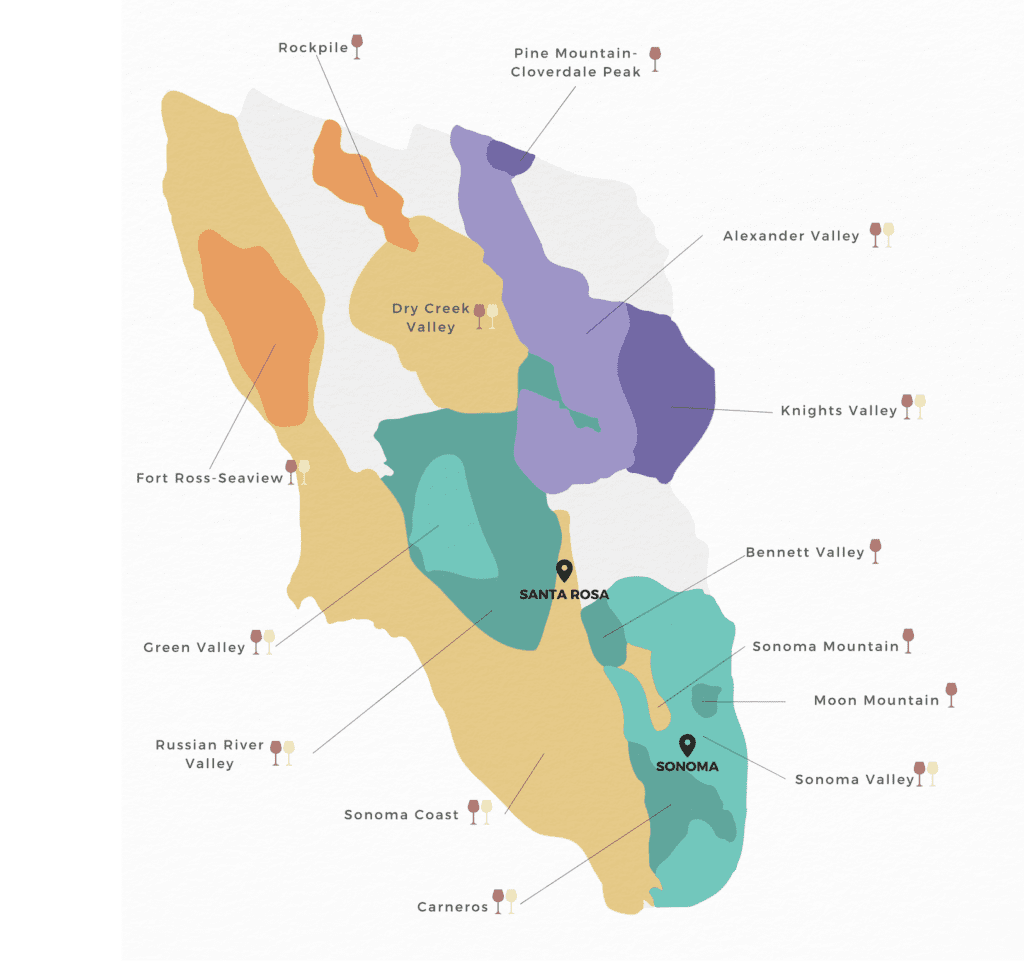
Sonoma Valley has a long history and impact on Californian wines. Back in 1823, Franciscan friars at Mission San Francisco Solano planted the first several thousand grapes in what is known as the city of Sonoma today, thus starting viticulture in the area.
To start new vineyards, cuttings from the Sonoma mission vineyards were transported throughout northern California.
Although the grape varietals planted at the time would not have been considered premium varietals, it was in 1861 that the premium varietals of 100,000 cuttings were introduced by a Hungarian who was studying viticulture in Europe at the time.
Commercialization of the wine industry was started in the 1850s and was titled an official AVA in 1981.
Spread over 63,000 acres of vineyards in the oldest wine-growing region of Sonoma County, the Sonoma Valley Wine Region is recognized as perfect for growing wines due to its climate. and soil.
The vine growers here are blessed with a wide variety of climates and terroirs. With long, dry, sunny, warm but rarely hot summer days and cool nights, ocean breezes, and fog, the climate of the Sonova Valley AVA is ideal for growing and harvesting high-quality grapes.
Oceanic fog from the Pealuma Gap flows into the valley, helping to create a diurnal temperature range of 40 degrees or more, contributing to the acidity and complexity of wine grapes.
The soil of the Sonoma Valley is also notable as it is wide-ranging in nature, from rich and loamy to volcanic or rocky and well-drained.
Grapes Varietals of Sonoma Valley Wine Region
More than 60 grape varieties are grown and harvested in the Sonoma Valley AVA. Below are seven of the most common and famous varietals of grapes:
Chardonnay: This widely popular white grape may have originated in the French region of Burgundy, but it has found a happy home in California, delivering its crisp and mineral-driven flavor and providing a rich flavor to wines.
Pinot Noir: This red Burgundian beauty has thrived in the Sonoma Valley. It is a fragile grape to produce due to its thin skin, but incoming sea breezes lend a lovely salinity to the finished wines, tempering their sun-kissed cherry and berry flavors with elegant minerals and acidity.
Cabernet Sauvignon: From France’s Bordeaux region into the mountainous AVAs of Sonoma Valley, Cabernet Sauvignon has been loved for its deep, dark berry flavors, dusty notes of minerals and terroir, and often penetrating tannins from oak aging perfectly.
Merlot: Merlot is a well-known red wine variety from Bordeaux that has a reputation for being mellow and approachable. Blended alongside other Bordeaux varietals like Cabernet Sauvignon or Cabernet Franc, it becomes a well-blending grape.
Syrah: Syrah has been gaining ground in total production since the 2000s. Produced in France’s Rhone Valley, Syrah has well adapted to the Sonoma Valley, benefiting from the Mediterranean climate. for barbecue. This wine has notes of violets, leather, and red berries. Also try it in blends with Grenache, its natural blending partner.
Sauvignon Blanc From crisp and grassy to round and fruity, Sauvignon Blanc is the perfect blank canvas for its terroir. Try this light white grape alone as an easy-to-drink aperitif to get the taste buds going.
Zinfandel: Spicy, fruity, and deep, this red grape is divine alongside hearty dishes, and it works well in blends and single-varietal wines alike.
California Red Wine Flavor Profile Chart
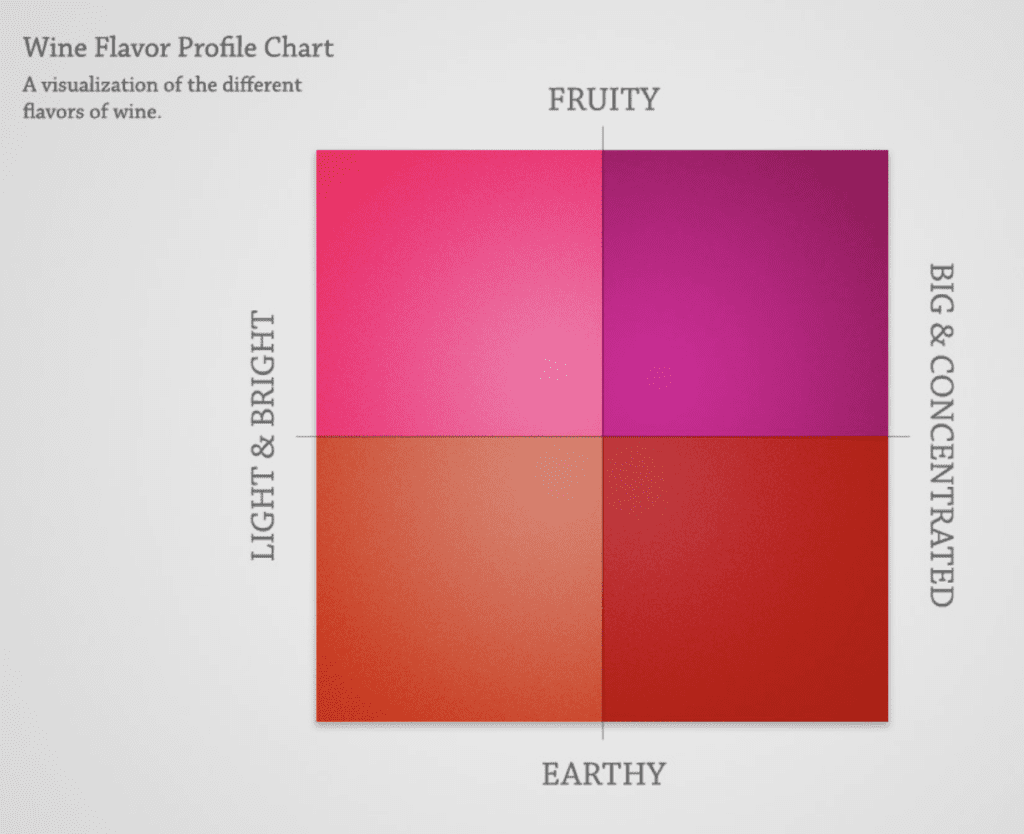
The Wine Flavor Wheel
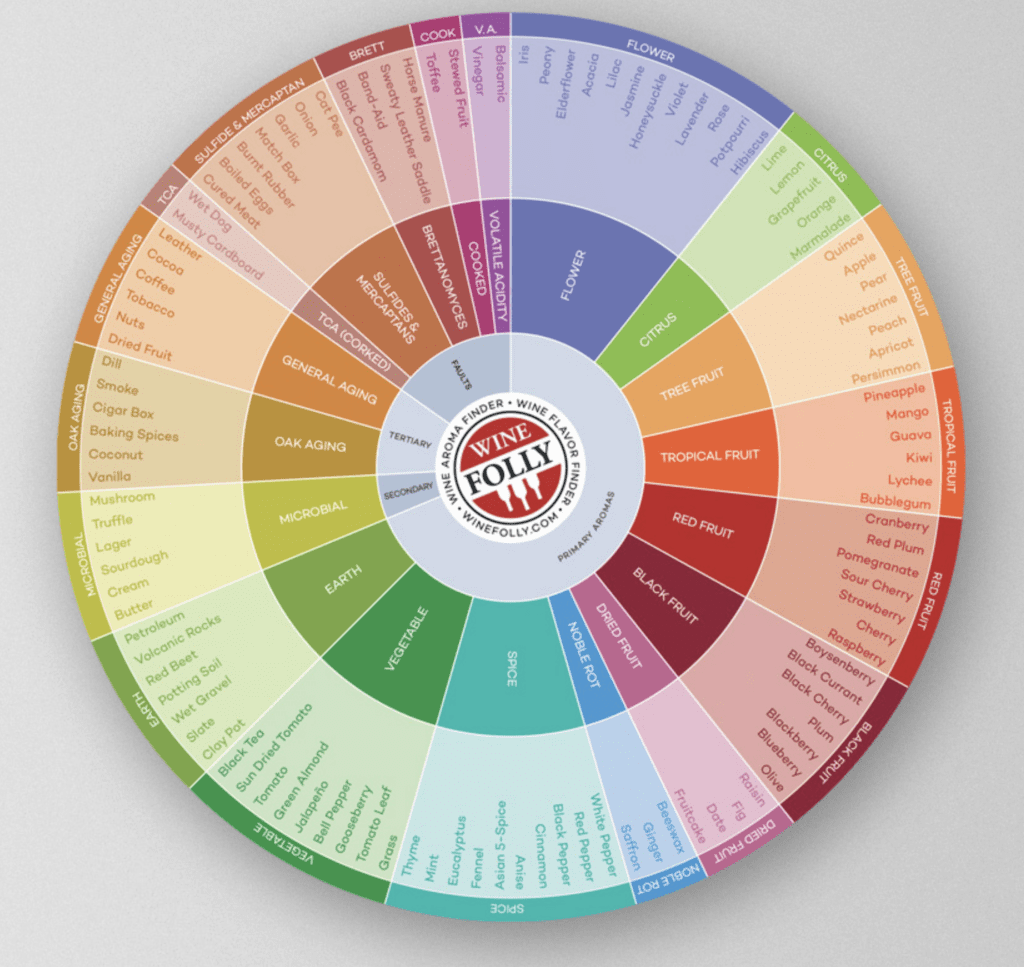
Primary Aromas
Primary aromas are from the type of the grape or the environment in which it grows.
For instance, Barbera wines will often exhibit subtle nuances of licorice or anise. You’ll find quite a range of flavors in the Primary Aroma group, including fruit flavors, herbal flavors, earthiness, floral notes, and spices.
Secondary Aromas
Secondary aromas come from the fermentation process, which includes yeast and other microbes. A great example of this is the sour smell that you can find in Brut Champagne that is sometimes described as “bready” or “yeasty.”
Fermentation-related aromas are present in all wines at some level and you’ll find that young wines tend to have more intense Secondary Aromas than wines that have been aged.
Tertiary Aromas
Tertiary aromas (classically referred to as “bouquets”) come from aging wine. Aging aromas come from oxidation and resting the wine in oak or bottles for a period of time. You’re probably familiar with the vanilla aroma associated with oak-aging. Other, more subtle, examples of tertiary aromas are nutty flavors, like the hazelnut found in vintage Champagne or the dried fruit aromas, such as fig, that are associated with older red wines.
Most Popular California Reds
Cabernet Sauvignon (Kab-er-nay Saw-vin-yawn)
Cabernet Sauvignon is grown all over the world and it ripens late. In Bordeaux and Tuscany it is almost always blended to soften its intensely astringent tannins. The Napa style is dense, purple-black, jammy and tasting of currants and black cherries.
Style: Full-Bodied Red Wine
Merlot (Mer-Low)
Smooth and soft from start to finish, merlot wines.
The younger the merlot, the more you should note an orange-tinted rim hanging onto the glass, as well as its darker, almost blueberry coloration at the center of a pour. Taste-wise, merlots carry lush fruity notes, heavy on flavors of cedar, cherries, chocolate and currants. Tannin levels are moderate, and acidity stays in check with an uptick in those fruity notes that don’t veer overly sweet.
Style: There are three main styles of Merlot—a soft, fruity, smooth wine with very little tannins; a fruity wine with more tannic structure; and, finally, a brawny, highly tannic style made in the profile of Cabernet Sauvignon.
Pinot Noir (Pee-no Nwar)
Pinot Noir is the prettiest, sexiest, most demanding, and least predictable of all. Pinot Noir is a dry, light-bodied red that was first widely planted in France. The wines typically have higher acidity and soft a soft, smooth, low-tannin finish. Pinot Noir is the principal component of many Champagnes and other sparkling wines. Pinot Noir is best expressed as a pure varietal, and is often featured as a single-vineyard wine in Oregon and California, emulating the hundreds of tiny appellations of Burgundy. When at its best, Pinot has an ethereal delicacy yet can age for decades.
Style: Pinot Noir produces a heavily perfumed wine with scents of earth, spice, cherries, strawberries, herbs and raspberries when ripe. It is a light to medium bodied wine, with high acidity that can age well. Burgundy is an expensive wine region to taste from.
Two Interesting Pinots: Failla, Kosta Browne
Zinfandel (Zin-fan-dell)
Few wines match the bright, polished and sweet notes of a red zinfandel — or as high of an alcohol level.
Zinfandel has a lighter body similar to a pinot, this red wine type finishes on the front of the tongue, fading from signature fruit flavors like cranberries, raspberries, figs and prunes to dryer profiles of cardamom and cinnamon or other warm spices.
The rim of a zinfandel may skew slightly blue — a telltale sign that the wine contains a higher acidity level. Likewise, its primary coloration will range from deep scarlets to the maroons and magentas you expect when you pour a glass of red wine.
Style: Medium-bodied to full-bodied Red Wine
Flavors & Taste of California Reds
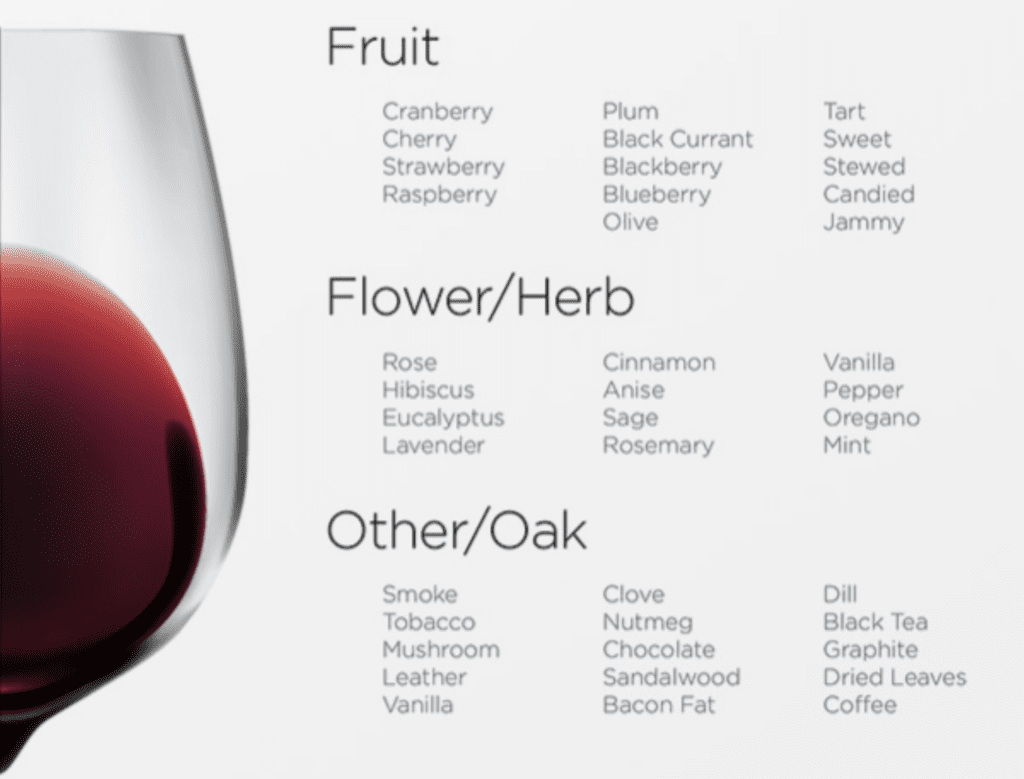
Cabernet Sauvignon
The Napa style is dense, purple-black, jammy and tasting of currants and black cherries.
Flavors: Bell pepper, green olive, herb, cassis, black cherry
Taste: Black Cherry, Black Currant, Baking Spices, and Cedar
Merlot
Smooth and soft from start to finish, merlot wines.
Flavors: Watermelon, strawberry, cherry, plum
Taste: Black Cherry, Raspberry, Plum
Pinot Noir
When at its best, Pinot has an ethereal delicacy yet can age for decades.
Flavors: Tomato leaf, beet root, pale cherry, blackberry, cola, plum
Taste: Red and black cherries and plums, raspberries, mulberries, blueberries, blackberries
Zinfandel
Zinfandel (aka Primitivo) is a medium-bodied red wine that originated in Croatia. Wines are fruit-forward and spicy with a medium length finish. Zinfandel is a red grape that may be better known in its pink variation, White Zinfandel. When you taste Zinfandel it often explodes with candied fruitiness followed by spice and often a tobacco-like smoky finish.
Flavors: Raspberry, blackberry, black cherry, raisin, prune.
Taste: A broad, exotic array of fruits from stone (overripe nectarine), to red (raspberry, sour cherry), to blue (plum, blueberry), to black (blackberry, boysenberry), Asian 5 Spice Powder, Sweet Tobacco
How to Pair California Reds
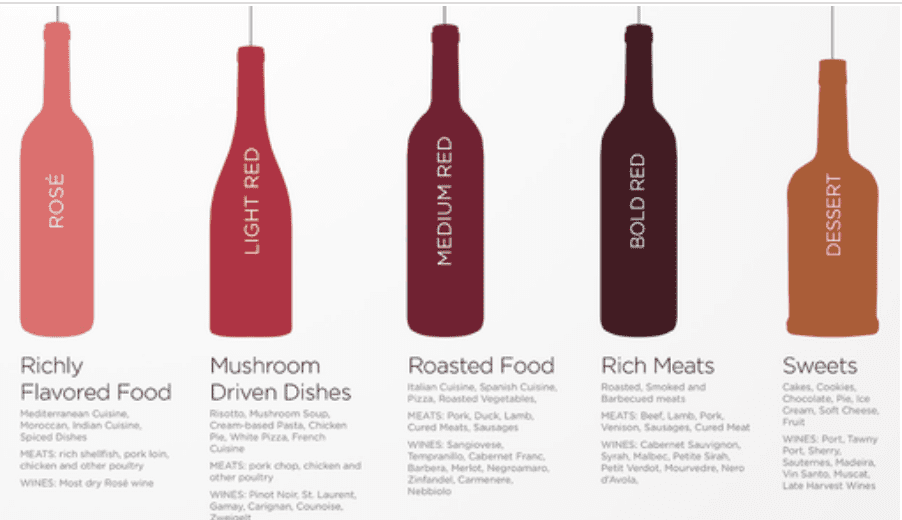
Cabernet Sauvignon
Food Pairing: lamb, beef, smoked meats, French, American, firm cheeses like aged cheddar and hard cheeses like Pecorino.
Merlot
Food Pairing: Prime ribs, braised short ribs, pork, lamb and veal chops, pasta with sausage in tomato-based sauces, traditional Italian meatballs, mushroom Swiss and veggie burgers, Caesar salad, grilled and barbecued meats, as long as they’re not too spicy and smoke cheeses and sausages
Pinot Noir
Food Pairing: chicken, pork, veal, duck, cured meat, French, German, cream sauces, soft cheeses, nutty medium-firm cheeses like Gruyèr
Zinfandel
Food Pairing: chicken, pork, cured meat, lamb, beef, barbecue, Italian, American, Chinese, Thai, Indian, full-flavored like cheddar and firm cheeses such as Manchego.
